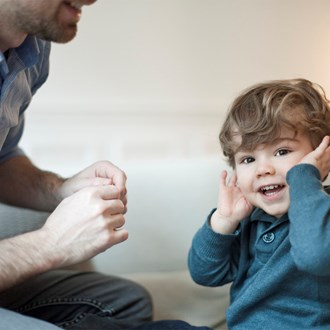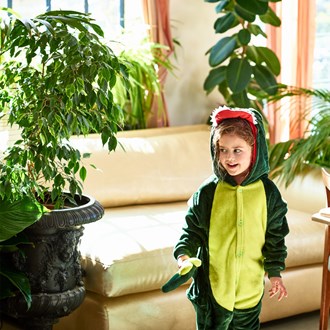Car seat laws Australia: Baby and child car seat laws

What you need to know
By Gina Flaxman
May 29 2019
What are the car seat laws in Australia?
All children under the age of seven must travel in a car in a correctly fitted, properly fastened child restraint that meets Australian safety standards. The correct child restraint depends on the age and size of your child.
If your child is under the age of seven and not travelling in a correctly fitted, properly fastened car seat, not only are you risking their lives in the event of a car accident, you could be fined a hefty penalty, and have demerit points deducted for each child that is not properly restrained.
In addition to the basic legal requirements, there are also extra recommendations. These are set out in best-practice guidelines by expert bodies such as Kidsafe (Child Accident Prevention Foundation of Australia) and Neuroscience Research Australia.

Getty Images
Baby car seat
Babies under six months must travel in a rear-facing car seat with an in-built harness. It can be an infant capsule or a convertible car seat specially designed for babies.
Toddler car seat
From the ages of six months to four years old your child must be in either an approved rear-facing or forward-facing car seat with an in-built harness.
While it is legal to move your child to a forward-facing seat after six months, for safety it is recommended you keep your child in a rear-facing seat as long as they fit in it.
Your child has outgrown their restraint if their shoulders are above the top shoulder harness slot for rear-facing use.

Getty Images
Booster car seat
Children aged four to seven must sit in either an approved forward-facing car seat with an in-built harness or an approved booster seat with a properly fastened and adjusted seatbelt or child safety harness.
Booster seats are usually slimmer than forward-facing car seats. Modern versions have high backs and sides for extra support and side-impact protection.
While using a backless booster seat or booster cushion is legal if it met Australian standards at the time it was manufactured, experts strongly advise against them.

Getty Images
Safety standards for child restraints
In Australia, all child restraints and car seats bought, sold or used must meet Australian/New Zealand standard AS/NZS 1754. The label should be on the packaging of new restraints as well as on the restraint itself.
Australian standards for child restraints are some of the most stringent in the world. Car seats bought overseas don’t comply with Australian standards so it’s illegal to use them.
If you’re buying accessories such as seatbelt modifiers, covers, inserts or padding, make sure they also have the AS/NZS 1754 label and only use accessories that are approved for that particular restraint.
You should keep using your child’s current car or booster seat until they reach the maximum shoulder height limits.
Car seat installation
If you’re new to car seats, it’s worth paying for a professional installation. About 70 per cent of child restraints aren’t properly installed and it’s not worth the risk. You can find authorised fitters through your state’s local Kidsafe, road traffic authority or motoring organisation. Some local councils offer free car seat installations or checking sessions.
If you’re installing it yourself make sure you follow the instructions and pay attention to the details. Make sure you use the correct anchorage points. Newer car seats are compatible with ISOFIX, a car seat installation system where the seat is clipped into anchorage points that are manufactured into the car. They are easier to install but the old seatbelt method is just as safe, if done correctly.

Getty Images
When can a child sit in the front seat?
It’s illegal for children under four to sit in the front seat of a car with two or more rows of seats. Children between four and seven can sit in the front, in a suitable car seat, if all the back seats are taken by children under seven in suitable child restraints.
Children aged seven and over can legally sit in the front seat with a suitable booster seat or properly adjusted seatbelt. But road safety experts recommend children stay in the back seat until they are 12. Injury risk to children under 12 in the front seat is nearly double the rate of children sitting in the back.
While children aged seven and over can legally use an adult seatbelt, road safety experts say children should be at least 145cm tall and most seven-year-olds are under this height. Experts recommend waiting until children are 10-12 years old.
Children are big enough to use an adult seatbelt without a booster seat if they can sit with their back firmly against the seat, their knees comfortably bent over the seat, the sash belt across their mid-shoulder and the lap belt across the top of their thighs for the entire car journey.
What about taxis?
The laws around child restraints in taxis differ slightly between different states.
In NSW, children under one must use an approved rear- or forward-facing car seat in a taxi. All wheelchair-accessible taxis are required to carry an approved child car seat or you can use your own. Children over one are allowed to wear a seatbelt in a taxi but experts strongly advise parents use a car seat. You can use your own or book a taxi with car seat. As many taxi providers do not have car seats, it’s probably safest to use your own.
In VIC, QLD and all other states and territories, taxi drivers do not have to provide car seats but have to ensure there is at least one anchor point for passengers to supply their own. Children under one do not have to use a car seat but must travel in the back seat on an adult passenger’s lap without sharing the seatbelt. Children aged over one must be seated in their own seating position in a taxi with their own properly fastened seatbelt if there is no suitable car seat available.
In all states and territories, children under seven are not allowed to travel in a hire vehicle (this includes rideshare vehicles such as Uber) without the appropriate approved car seat for their age and size.
Children don’t have to use car seats in buses (any vehicle with more than 12 seats) but it is recommended that they do.






